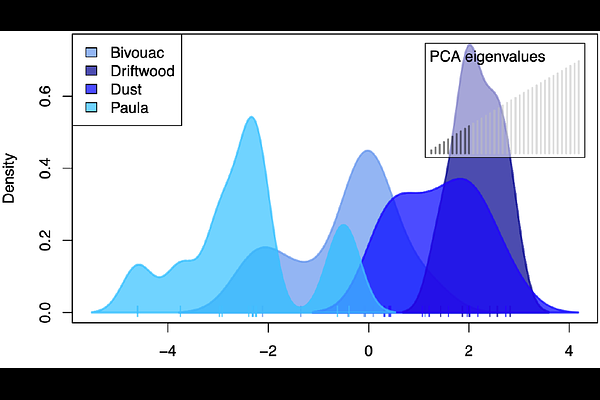Genome-wide characterization of upper Fraser River sockeye salmon identifies a region of major differentiation between run timing groups in the Stuart River Watershed

Genome-wide characterization of upper Fraser River sockeye salmon identifies a region of major differentiation between run timing groups in the Stuart River Watershed
Sutherland, B. J. G.; Williamson, C.; Toth, B.; Sterritt, G.
AbstractEarly Stuart sockeye salmon Oncorhynchus nerka undergo one of the most intensive and far-reaching migrations in the Fraser River (British Columbia, Canada) that has likely exerted selective pressures shaping their genetics and physiology. To support upper Fraser River sockeye management objectives, there is a need to further understand the unique genetics of these populations. Based on neutral genetic markers, Early Stuart sockeye are considered a metapopulation with little to no genetic differentiation among their approximately 50 spawning streams. In this study we make use of existing resources to evaluate genome-wide genetic differentiation in this metapopulation and put it into the context of other nearby populations. We confirm that genetic differentiation is low or negligible in the metapopulation at a whole-genome level, although we identify a slight increase in differentiation at greater distances within the watershed compared to more proximal streams (e.g., FST = 0.001-0.002 compared with undifferentiated). Even the greatest differentiation detected is very low, being nine times lower than that between run timing groups (Early Stuart vs. Stuart-Summer; e.g., FST = 0.0091). Notably, a region of major differentiation was detected between the run timing groups on Chr18 between 56.3-58.0 Mbp (average FST = 0.661). This genomic region appears to contain a unique haplotype specific to the Stuart-Summer, Nadina River, and Stellako River populations (i.e., upstream to the Nechako River). By contrast, Early Stuart and other upper Fraser River sockeye outside of the Nechako Watershed do not possess this haplotype. The genomic region is within ancestral chromosome 15.2, the homeolog to a chromosome arm of Chr12 (i.e., 15.1); this arm of Chr12 is known to contain a major differentiated region associated with run timing and life history variation in Alaska and the Okanagan. This finding provides additional evidence for the importance of this genomic region in both homeologous chromosomes within different populations of the same species, and points to the uniqueness of upper Fraser River sockeye in this potential major effect locus.